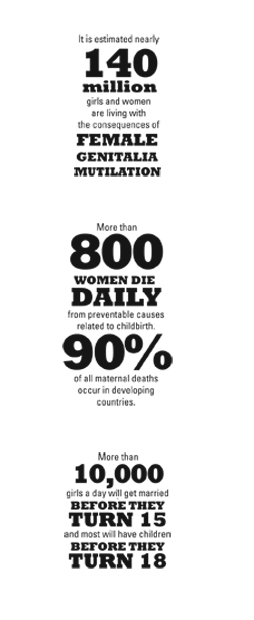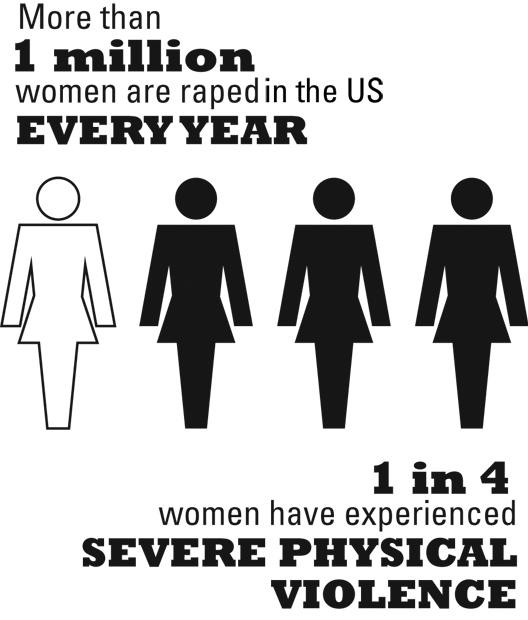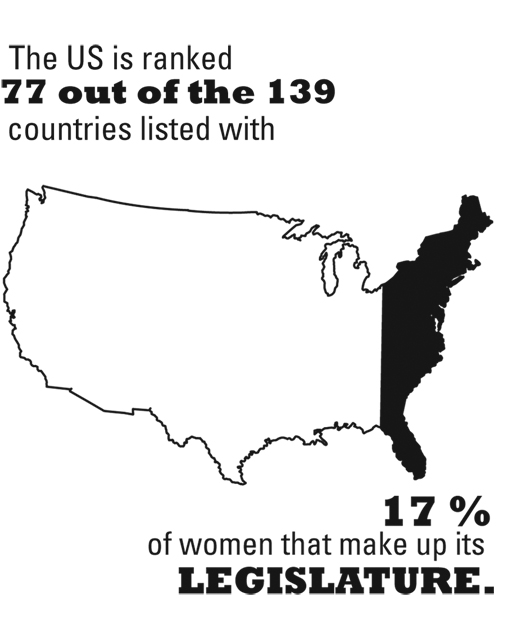
Don’t fool yourself. It’s still a man’s world.
Yes, some of you might argue that the issue is tiring, boring and repetitive. But it must be repeated until the words are heard and the goal is achieved. And yes, we have come a long way and that certainly needs to be acknowledged. However, more work needs to be done before we can tell ourselves that we live in a supposedly gender-blind society. It is only when every mother, daughter, sister and grandmother worldwide can breathe and walk safely, that we can proudly and firmly shout gender equality.
To live free from violence and inhumane treatment is one of the most fundamental human rights that should be given to everyone regardless of gender. Yet, it is estimated that one in every three women worldwide experience violence and in some countries, almost 70 percent of women have their basic human rights violated. These manifestations of violence range from rape to domestic abuse, honor-killing and acid burnings. But perhaps one of the merciless practices that continues to plague young girls and women in the world is female genital cutting or FGM.
According to the 2013 report by World Health Organization, “about 140 million girls and women worldwide are currently living with the consequence of FGM.” Each day, some 8,000 girls face the risk of getting mutilated.
For those who are unaware of FGM, it is a procedure that intentionally alters or causes injury to the female genital organs by partial or total removal of the external female genitalia. It is a grotesque and inhumane practice that is carried out on young women between the periods of infancy and the age of 15. Not only does it cause unbearable, immediate pain and shock, but life-long health problems; both physical and psychological.
Some people claim that Islam is to blame for this practice, but this is far from the truth. It’s imperative to remember that religion is never the cause for man-made problems. Rather, the practice of FGM, which is not unknown to the West as they performed clitoridectomies into the 1940s, is the consequence of our patriarchal global society that has devalued women for as long as the existence of mankind. A mindset that is slowly evolving, but still remains very much alive, especially when it comes to man-made deprivation and barriers that have become increasingly attached to gendered roles over time.
According to the Girls and Women’s Education Initiative, an organization that attempts to meet the needs of the educationally disadvantaged, “one in three women and girls in the developing world live on less than $2 a day.” The same amount of money we usually spend on a bottle of water is the same amount other people have to stretch in order to feed themselves and their family, buy clothes, pay rent while trying to send one’s children to school; a strenuous choice that often has negative effects on young women who are often excluded from gaining an education.
According the 2012 report “Because I am a Girl,” only 74 percent of young women between the age of 11 and 15 are in school globally, compared to 83 percent of boys. As indicated by the report, these numbers do not share the reality of poorer and rural girls or girls in conflict-affected regions. Consequently, the average number would drop even further if these lives were to be included.
It’s essential to remember that once young women are excluded from school, choices become few and far between, leaving marriage as the most practical path one can take to survive poverty. It is estimated that more than 10,000 girls girls a day will eventually get married before they turn 15 and most of them give birth before they turn 18. Unfortunately, the world is already losing too many young lives to maternal mortality.
According to the 2012 report by the World Health Organization, every day, more than 800 women die from preventable causes related to pregnancy and childbirth. Moreover, 99 percent of all maternal deaths occur in developing countries.
When examining the world and the listless issues that women face, particularly in developing countries, one can quickly make the assertion that industrialized countries like the U.S. have come a long way and the work of feminism has been very fruitful in achieving gender equality. But this is a fallacious proclamation that erases everyday reality of women.
The “The National Intimate Partner and Sexual Violence Survey,” by Centers for Diseases and Control Prevention show more than one million women are raped a year and about one in four women have experienced severe physical violence. These extremely sobering numbers are attached to many faces that could be your sister, friend, daughter, mother or grandmother. Consequently, the fight against sexual violence should be everyone’s fight; both men and women– young and old. Furthermore, it’s imperative to remember that violence against women is not the only issue that needs to be accentuated; firm barriers that stand against opportunities in a supposedly democratic, un-patriarchal progressive country need to be broken down.

According to the 2012 report by the United State Census Bureau, “the poverty rate for males decreased between 2010 and 2011 from 14 percent to 13.6 percent.” However, the poverty rate for females remained 16.3 percent, a discrepancy that cannot be explained by any educational gap.
The 2013 report “Still Behind,” by The Women’s Legal Defense and Education Fund, showed that young women now surpass young men in educational attainment. In 2012, more than 30 percent of women age 21 to 30 had a bachelor’s degree compared to 23 percent of men in the same age group. However, this report showed that young men still have superior levels of economic well being where the median income for women was about $14,000 compared to $20,000 for men.
Perhaps more significantly, when comparing the U.S. with other industrialized countries, one cannot overstate enough how much the country is lagging behind in terms of gender equality, especially when it comes to maternity leave and political empowerment.
According to a 2013 report by “Raising the Global Floor,” an organization that measures governmental performance, wage replacement of paid leave for mothers in the Scandinavian countries, Russia and China is between 75 percent to 100 percent. In the U.S., there is no such concept or policy as wage replacement. In fact, the only four countries that do not have wage replacement or duration of paid leave for mothers globally are Papau New Guinea, Sierra Leone, Liberia and the U.S.
Although we tend to categorize childbearing as a private issue, it ought to be treated as a public issue because the well-being of mothers and their children affects the well-being of the nation as a whole. However, most societies have been slow to implement safeguards that could drastically improve the lives of women; a reality that can be partly explained through the exclusion of women in the political realm where decisions are often made for a woman and not by her.
According to the 2013 report “Women in National Parliaments,” Rwanda is the only country in the world that has more than 50 percent of women in its legislature. The U.S. is ranked 77 out of the 139 countries listed with 17 percent of women in its legislature. Of the 435 members in the house, 80 are women and of the 100 senators, 20 are women.

For decades, blood has been spilled and tears shared in order to achieve gender equality. We have fought for the right of girls and women to be seen and heard as human beings; to be respected for their individual work, dedication, and integrity. More importantly, to make sure that they are able to walk safely on this earth without fearing that their gender might be the cause for an early, unjustifiable and inhumane death. Women in this world are not asking for much. All they want, and most definitely deserve, is to be treated and respected as human beings; a cost-free demand that should be in everyone’s interest to provide.





